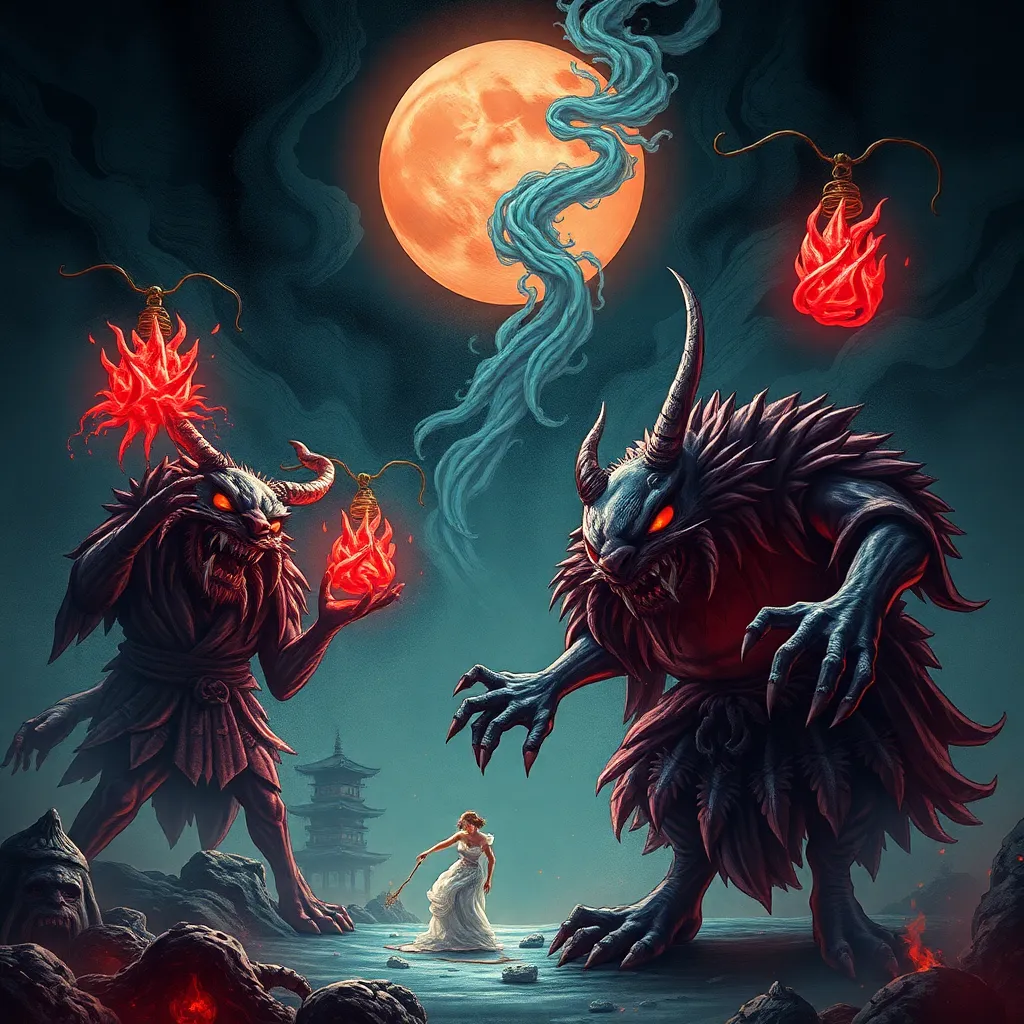The Wrathful Spirits of Japan: Exploring the Yokai of Tsukumogami
I. Introduction to Tsukumogami
Tsukumogami are a fascinating category of Yokai in Japanese folklore, representing the spirits of objects that have gained consciousness after a century of existence. These entities embody the notion that inanimate objects can harbor emotions, memories, and even a sense of vengeance if mistreated or discarded thoughtlessly. The cultural significance of Tsukumogami extends beyond mere superstition; they serve as reflections of society’s values and attitudes toward material possessions.
This article delves into the world of Tsukumogami, exploring their origins, characteristics, and the lessons they impart about respect for the objects that fill our lives.
II. The Concept of Yokai in Japanese Mythology
The term “Yokai” refers to a class of supernatural entities and spirits in Japanese mythology, known for their diverse characteristics and behaviors. These beings can range from mischievous to malevolent, embodying various aspects of nature and human emotions.
- Definition of Yokai: Yokai are often described as strange apparitions or phenomena that can influence the world around them.
- Historical Context: The concept of Yokai has evolved over centuries, deeply intertwined with Japan’s cultural and spiritual beliefs.
- Benevolent vs. Malevolent: Yokai can be categorized based on their intentions; some bring good fortune, while others may seek revenge or cause mischief.
III. The Life Cycle of Objects: From Inanimate to Animate
One of the most intriguing aspects of Tsukumogami is the belief that inanimate objects can gain souls after they have existed for 100 years. This transformation highlights a unique perspective on the relationship between humans and their possessions.
- The Belief: In Japanese culture, it is believed that with age, objects accumulate experiences and emotions, eventually leading to their awakening as Tsukumogami.
- Transformation Process: The transition from a simple object to a Tsukumogami involves a process of animism, where the object becomes imbued with life and spirit.
- Examples: Common household items such as umbrellas, tools, and even furniture can become Tsukumogami if they are neglected or improperly treated.
IV. The Nature and Traits of Tsukumogami
Tsukumogami are characterized by specific traits that distinguish them from other Yokai. Understanding these traits helps to appreciate their role in folklore and Japanese culture.
- Common Characteristics: Tsukumogami are often depicted as having a blend of human and object-like features, reflecting their dual nature.
- Wrathful Temperament: Many Tsukumogami are known for their vengeful spirits, particularly towards those who have mistreated them.
- Distinguishing Traits: Unlike other Yokai, Tsukumogami are closely tied to specific objects, which can influence their appearance and behavior.
V. Famous Tsukumogami in Folklore
Various stories and legends highlight notable Tsukumogami, each carrying moral lessons that resonate with cultural values.
- Karako (Umbrella Yokai): A classic example, this Tsukumogami is said to haunt those who abuse or neglect their umbrellas, often depicted as a playful yet mischievous spirit.
- Chōchin-obake (Paper Lantern Yokai): This spirit represents the vengeful soul of a worn-out lantern, warning those who misuse their belongings.
These stories often serve to remind individuals of the importance of care and respect for the things they own, embedding traditional values into everyday life.
VI. Tsukumogami in Modern Culture
In contemporary society, Tsukumogami have found new life in various forms of media, reflecting their enduring legacy in Japanese culture.
- Representation in Media: Tsukumogami have appeared in anime, manga, and films, often portrayed as characters that blend humor and horror.
- Influence on Art and Literature: Modern artists and writers draw inspiration from Tsukumogami, exploring themes of materialism and the relationship between humans and objects.
- Resurgence of Interest: Younger generations are increasingly fascinated by Tsukumogami, leading to a revival of interest in traditional folklore.
VII. The Psychological and Social Implications of Tsukumogami
The belief in Tsukumogami reflects deeper psychological and social issues related to consumerism and environmental consciousness.
- Cultural Attitudes: Tsukumogami highlight the importance of valuing and respecting objects, countering the throwaway culture prevalent in modern society.
- Societal Issues: By addressing themes of waste and neglect, Tsukumogami stories can prompt discussions on sustainability and mindful consumption.
- Significance of Respect: The concept encourages individuals to appreciate the histories and stories behind their possessions, fostering a deeper connection to their belongings.
VIII. Conclusion
In summary, Tsukumogami serve as a captivating lens through which to explore the intersection of folklore, culture, and modern societal values. Their stories not only entertain but also impart significant moral lessons about respect, responsibility, and the consequences of neglect.
As we continue to navigate a world increasingly defined by consumerism, the enduring legacy of Tsukumogami encourages reflection on our relationships with the objects that surround us. The exploration of Yokai, including Tsukumogami, invites us to delve deeper into the cultural narratives that shape our understanding of the world today.
For those interested in Japanese culture, the stories of Tsukumogami and their fellow Yokai offer a rich tapestry of folklore that remains relevant in contemporary discussions about sustainability and respect for both people and objects.



